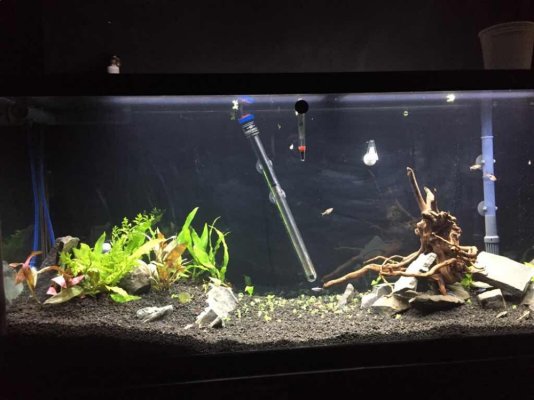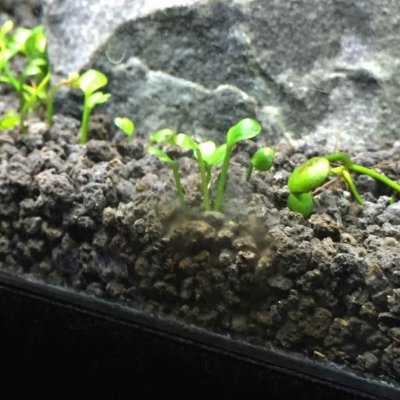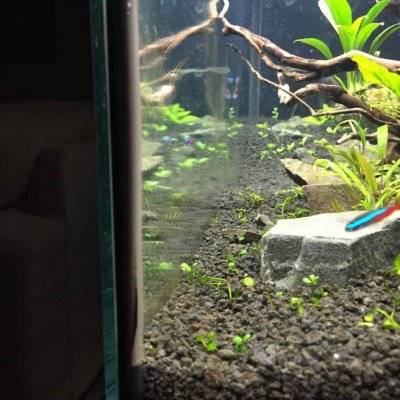These silicate compounds then start building up in your tank's water since nothing is removing them, unless you actually take some measures to prevent them from doing so. When they build up to sufficient levels or concentrations, brown algae start to appear in patches first (often on the glass or acrylic panes of the tank). Mind you the patches can be hard, filamentous, slimy and can take on various other forms, depending on which particular diatom is growing in the tank.
Many hobbyists are under the impression that using reverse osmosis water or deionized water will solve the problem, and that doing so will remove the silicates and silicic acid from that water. This is, unfortunately, not the case. Such units, even if combined, will remove silicate and silicic acid for a very short period of time only and, then, the silicate and silicic acid will get through the membrane and the resins and will start to build up in the tank.
By a short period of time I mean in a matter of days, depending on how much silicate and silicic acid the water you are treating actually contains. Tests have shown that, when treating water with 14 ppm of silicate, the silicate and silicic acid came through the membrane and the resins used in combination with the R.O. unit, after less than 100 gallons of water had passed through the filtration set-up (lab. notes ref. 95/6/-012)
This is really not much water when you consider that most hobbyists believe that using reverse osmosis, deionization or a combination of both, gives them water quality of very high purity levels. Obviously this is not so, and that belief is a totally false one”. R.O. and D.I. remove silicates and silicic acid for “some” time” only, after which the membrane of the reverse osmosis filter and the resins in the deionizers let the compounds through.
The conclusion to draw from this is that, regardless of how you filter your water, silicates and silicic acid will find their way into your aquarium's water, and you are going to have to take steps to remove it. This is discussed in the next section for both the water in the tank and the raw water. If you do not, diatoms will appear in your tank.
How do you remove these compounds?
First of all, we need to take into account that two sources of water need to be treated.
- The water already IN the aquarium
- The water used to perform water changes, I refer to this as the raw water.
Treating the water already in the tank:
This is very simply done by using a silicate removing compounds and ensuring that all the water in the tank flows through the compound on a continuous basis and that good contact between the water and the compounds exists so they can effectively and efficiently deplete the water passing through them of silicate and silicic acid.
To ensure that this happens, the silicate removing compounds needs to be positioned in such a manner in the general aquarium water flow that all that water will indeed flow through it and not just over and by it. To ensure this, you must carefully look at what the best place will be in your particular case and filtration set up. There may be several possibilities. Pick the one where you estimate that the water will come into maximum contact with the silicate removing compounds as this will ensure better and more efficient removal of the unwanted “nutrients” for diatoms.
If the water does not come into proper contact with the silicate removing compounds, the silicates and silicic acid will not be properly, or entirely, removed from the water. If the silicate and silicic acid are not removed, they will build up and, soon, diatoms will appear in the aquarium.
If this is the case, you have obviously not achieved your goal and you have under utilized the efficiency of the silicate removing compounds that you placed in the aquarium (usually in a bag or fine mesh pouch).
Remember too that these compounds do not last forever and that they need to be changed. At the slightest appearance of brown filaments on your tank's panes you should replace all the compounds. Once you get a feel for how long this takes, you can replace them a few days earlier and prevent the diatoms from appearing altogether.




